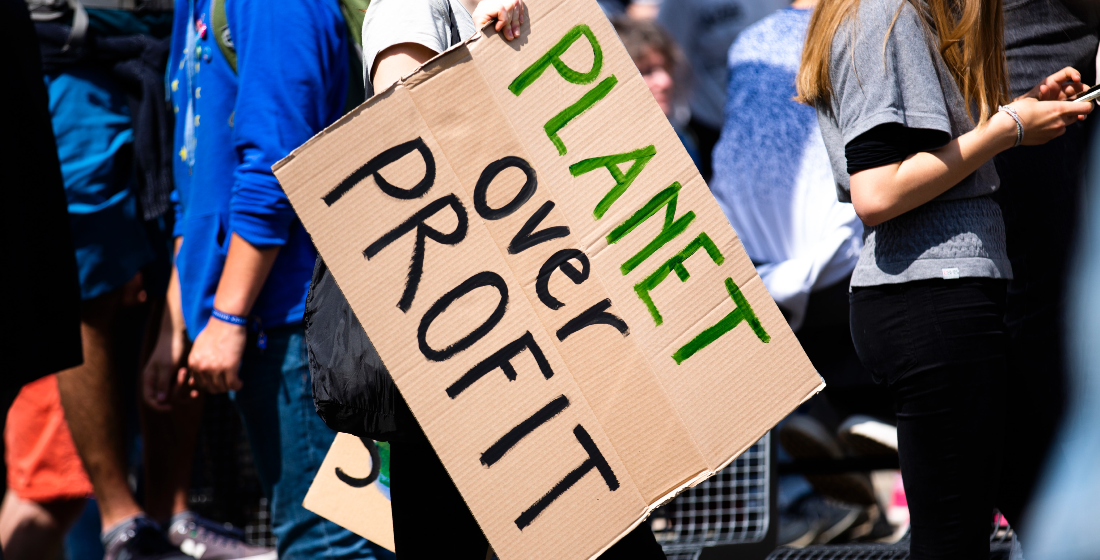COP26 analysis: ‘Better than expected, worse than hoped’
Uxolo sat down with Dr Olaf Weber, University Research Chair in Sustainable Finance at Canada’s University of Waterloo, to discuss the climate finance outcomes of last week’s COP26 agreement.

Could you summarise what was agreed at COP26 from a climate finance perspective?
Dr Olaf Weber: It’s all still relatively vague. Since Paris, there is still this $100 billion a year agreement to help developing countries address climate change. That wasn’t achieved in time for the COP26 but there were additional commitments secured at the summit from the likes of the UK, Germany and Canada that brought the total up to that initial target. So at least they achieved what they wanted there in regards to finance.
Another landmark was the net-zero pledge of the financial industry (GFANZ); but of course that’s a voluntary, non-binding agreement. And there was another agreement by an alliance of countries committing to not financing fossil fuel projects abroad. And of course – which was a surprise for many – the main thing was the fact that fossil fuels and coal were mentioned for the first time in the final document. The term “phase out” coal was eventually watered down to “phase down”, which obviously isn’t perfect but at least they mentioned the main contributor to climate change for the first time in COP history.
Nonetheless, compared with what we had with the Kyoto agreement in 1992, which was a very structured financial mechanism, we didn’t get anything like that in Glasgow. And I don’t know if we ever will because the general agreement since Paris is that each country attempts to reach their net-zero target in their own individual way. So there’s no clear climate finance mechanism.

In your professional view, are you happy with the outcomes of the negotiations?
I read somewhere – and very much agree with – the phrase: ‘it went better than expected but worse than hoped’. Many countries didn’t even want to meet at the beginning but at the end there were some pretty hefty commitments agreed. So I’m pretty positive. I mean, we’ve had 25 COPs before and each time we expect the big breakthrough but history doesn’t really support that expectation.
The main issue is more with international politics than the climate. There’s a reason why India has behaved the way they did, and that’s not climate related but rather due to the fact that it’s unfair for developed countries to expect developing ones not to follow in their footsteps in respect to economic growth. That’s always been the main issue that needs to be solved before anything else can happen. But in general, the agreement wasn’t too bad.
Also, one could definitely criticise the net-zero commitment from the financial industry. What do they mean by ‘net zero’? The financial industry is still financing a lot of fossil fuels and many of them don’t even know the emissions that they are financing. But, once again, it’s the first time the industry has made such a commitment, so that’s a step in the right direction.
Generally, we need to see more commitment to phasing out the financing of coal and other fossil fuels, to at least the extent that it aligns with the science on climate change and emissions.
How did the negotiations play out: which countries were pushing for more ambitious climate finance targets and which ones were holding them back?
Obviously, the countries that are most affected were pushing more, such as the Small Island Developing States (SIDS). The developed countries that are less dependent on the fossil fuel industry were also pushing for an increase, such as France. But you can clearly see who depends on fossil fuels through the countries that were pushing back on increasing the target, such as China and India – and even the US to an extent, who are very reliant on coal for electricity.
Whether the target is $100 billion or $1 trillion, in the future all finance needs to be climate finance – or rather it must be finance that aligns with the climate goals. If we continue insisting that we have a certain amount that we use for climate finance, and the rest goes to contradictory investments, then we won’t reach our climate goals. Canada, for example, has a new regulation that says that the Ministry of Finance has to disclose an annual report about how the Canadian economy is contributing to climate change – that’s what we need more of.
What progress was made on the push to mobilise more private sector funding in the climate finance arena?
Despite the GFANZ agreement, the general problem here is that we first need the governments to commit concretely to reaching their net-zero targets. For example, here in Canada, where fossil fuel energy is still very cheap, there is no real push to change the housing structure that we have, there’s no massive investments in climate infrastructure, etc.
So how can we expect private finance to step in: the financial industry finances projects that make sense from a financial perspective, so why should they do otherwise if there isn’t any support from governments. What we see is there aren’t enough of these big projects out there to actually finance, and that needs to change if we’re going to see the private sector play a bigger role.
Do you think we’ll see any new emphasis on particular financing mechanisms coming out of the summit, such as innovative forms of blended finance or risk transfers?
I didn’t see any particular emphasis on any financial mechanisms there. And I think that might be because the Kyoto Protocol was too detailed and many countries didn’t like that. I think there are some good mechanisms that could be used, such as first-loss insurance, but I don’t really see any governments pushing in that regard. China has a green credit policy that is pretty sophisticated but otherwise there isn’t much around.
But do we even need any new mechanisms? If you look at green bonds, for instance, they are heavily oversubscribed. So the demand is there, and investors are definitely willing to invest in them, but the supply isn’t there. We need more bankable projects, and there are blended finance mechanisms that can help with that but I don’t know if governments are innovative enough to push them.
Will the multilateral development banks (MDBs) be asked to play a different or greater role in the bid to bridge the climate finance gap?
That will just depend on what the governments want to do individually. Take the European Investment Bank: if the EU says that they don’t want to finance fossil fuels anymore, the EIB won't finance fossil fuel projects anymore. Germany didn’t want to sign in the beginning because they had a lot of gas projects in the pipeline with KfW.
There’s a lot of development bank finance still going to fossil fuels projects and I think the MDBs need to come up with better commitment there. What’s missing is the counter argument to the one that says that coal is a cheap form of energy for developing countries. If you see now what’s going on in China and India with, say, the pollution in Beijing and Delhi, then you see that coal energy isn’t so cheap anymore. How much did China invest in the end to try and fix its air pollution problem? The MDBs have really clocked on to that reality yet.
Going forward, which countries or regions will likely receive greater levels of climate finance? And will there be more funding made available for adaptation-focused projects?
There will be more money flowing into countries that are more affected, such as the SIDS or at-risk coastal countries like Bangladesh. And this will probably be more on the adaptation side because you can’t generally change the effects in the short term with mitigation activities, as we’re seeing at the moment with all the climate migration crises going on around the world.
On the other hand, it might make sense to provide more climate finance to fast-growing emerging countries in order to avoid them going down the same path as developed countries from an emissions perspective. So I think it would make a lot of sense to help countries like Indonesia and Nigeria, and even China and India, to help them to create more economic development with less emissions. That would have a big impact given that they will be the future biggest emitters.
In your view, what needs to be done to hit the stated target of $500 billion of climate finance by 2025? And is that amount going to be sufficient to keep the world on track for its net-zero targets?
I think we have to stop thinking in these terms: ‘this is climate finance, this is not climate finance.’ If you say, ‘this is climate finance’, then you could probably interpret that as something that isn’t financially attractive; something we need to find from somewhere but isn’t really investment. I think we need to move away from that idea.
If we start prohibiting finance that is in contrast to climate change mitigation and adaptation (we still put a lot of money into companies and sectors that increase climate change) and channel that money into other projects, I think then we have a different perspective on the matter. Everything that is invested in energy, infrastructure and other sectors should be aligned with climate change goals, and then we will easily find investors and nobody will talk about these investments as climate finance.
So we need to change it so that instead of talking about green finance or climate finance, we’re talking about brown finance as the risky portion of finance. We know that green bonds are less risky than non-green bonds, and that’s why everyone wants to invest in them. We have to figure out what is really in contradiction to our climate targets and just say, ‘we have to stop that’, and that would automatically increase the levels of investment in climate-friendly activities.





